MaryAnn Bernal's Blog, page 137
November 10, 2015
Work Begins to Retrieve Nazi Gold Train Believed to Contain Lost Amber Room of Charlottenburg Palace
Ancient Origins
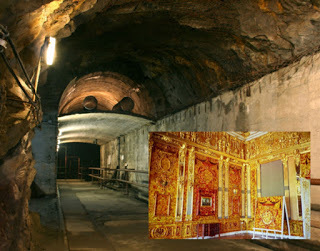
Two months ago, headlines were made around the world as treasure hunters identified a legendary Nazi train packed with weapons, gold, money, and archives hidden in a long-forgotten tunnel in the Polish mountains. It is believed that the train may also contain the long-lost Amber Room of Charlottenburg Palace, an early 1700s room crafted from amber, gold, and precious jewels, estimated to now be worth $385 million. This week, engineers will begin surveying the site to determine how the possibly booby-trapped armoured train can be retrieved.
Poland’s Culture Ministry announced that the location of the Nazi train was revealed to Piotr Koper of Poland and Andreas Richter of Germany, through a deathbed confession. The Telegraph reported that two treasure-hunters found the 100-meter-long armoured train and immediately submitted a claim to the Polish government – under Polish law treasure findings can keep 10 per cent of the value of their find. The Polish Ministry have confirmed the location of the train using ground-penetrating radar.
The train is said to be located in an underground tunnel constructed by the Nazis along a 4km stretch of track on the Wroclaw-Walbryzch line. However, its exact location is being kept hidden, not least because it is believed to be booby trapped or mined and will need to be investigated through a careful operation conducted by the Army, Police and Fire Brigade.
The Guardian reports that work is now underway to plan exactly how that operation will be carried out. Experts will be using magnetic field detectors, thermal imaging cameras and radars to begin a non-invasive search of the ground. Digging and drilling are not permitted until this initial testing phase is complete.
 An underground tunnel, part of Nazi Germany "Riese" construction project under the Ksiaz castle in Poland (
Ministry of Foreign Affairs of Poland / Flickr
)Nazi TreasureLegend has it that the Germans hid their looted treasures from the advancing Soviet Red Army as insurance policies to help fleeing war criminals escape and set up new lives at the end of WWII.
An underground tunnel, part of Nazi Germany "Riese" construction project under the Ksiaz castle in Poland (
Ministry of Foreign Affairs of Poland / Flickr
)Nazi TreasureLegend has it that the Germans hid their looted treasures from the advancing Soviet Red Army as insurance policies to help fleeing war criminals escape and set up new lives at the end of WWII.
While government officials have said that they don’t know the exact contents of the Nazi train, Piotr Zuchowski, a vice minister for conservation, told Poland’s Radio Jedynka that its contents are “probably military equipment but also possibly jewellery, works of art, and archived documents,” Yahoo News reports. An announcement by the Polish Ministry speculated that it may also contain the missing Amber Room, which was dismantled by the Nazis from Charlottenburg Palace near St Petersburg in 1941.
The Amber RoomThe Amber Room was originally installed in Charlottenburg Palace, the home of Frederick I, first King in Prussia in 1701. During a state visit to Prussia, the Amber Room caught the eye of the Tsar of Russia, Peter the Great. Seeing an opportunity to gain the favor of the Tsar of Russia, Frederick I presented the Amber Room to the Tsar in 1716 in order to cement the newly-formed Prussian-Russian alliance against Sweden. The Amber Room was dismantled and shipped to Russia in 18 large boxes, where it was installed in the Winter House in St. Petersburg as part of a European art collection. In 1755, Tsarina Elizabeth had the Amber Room moved to Charlottenburg Palace, where it remained until it was dismantled and stolen by the Nazis in 1941 and sent to Königsberg’s castle museum.
Although the Amber Room was on display for the following two years, the war not going well for the Germans, and the museum’s director, Alfred Rohde, was advised to dismantle the room and crate it away. Less than a year later, Allied bombing raids destroyed the city of Königsberg, and the castle museum was left in ruins. After that, the trail of the Amber Room simply vanished.
 A reconstructed segment of the Amber Room (
Wikipedia
)
A reconstructed segment of the Amber Room (
Wikipedia
) The original Amber Room, 1931 (
Wikipedia
)Many believed that the Amber Room was safely hidden by the Germans prior to the destruction of the castle museum and thus, there have been many attempts to track down this treasure, all of them unsuccessful.
The original Amber Room, 1931 (
Wikipedia
)Many believed that the Amber Room was safely hidden by the Germans prior to the destruction of the castle museum and thus, there have been many attempts to track down this treasure, all of them unsuccessful.
If the newly-discovered Nazi gold train does indeed contain the pieces of the world-renowned Amber Room, it will see the return and reconstruction of a valuable slice of history.
Featured image: An underground tunnel, part of Nazi Germany "Riese" construction project under the Ksiaz castle in Poland ( public domain ). Inset: Reconstruction of the Amber Room ( Patricio Rodriguez / flickr ).
By: April Holloway

Two months ago, headlines were made around the world as treasure hunters identified a legendary Nazi train packed with weapons, gold, money, and archives hidden in a long-forgotten tunnel in the Polish mountains. It is believed that the train may also contain the long-lost Amber Room of Charlottenburg Palace, an early 1700s room crafted from amber, gold, and precious jewels, estimated to now be worth $385 million. This week, engineers will begin surveying the site to determine how the possibly booby-trapped armoured train can be retrieved.
Poland’s Culture Ministry announced that the location of the Nazi train was revealed to Piotr Koper of Poland and Andreas Richter of Germany, through a deathbed confession. The Telegraph reported that two treasure-hunters found the 100-meter-long armoured train and immediately submitted a claim to the Polish government – under Polish law treasure findings can keep 10 per cent of the value of their find. The Polish Ministry have confirmed the location of the train using ground-penetrating radar.
The train is said to be located in an underground tunnel constructed by the Nazis along a 4km stretch of track on the Wroclaw-Walbryzch line. However, its exact location is being kept hidden, not least because it is believed to be booby trapped or mined and will need to be investigated through a careful operation conducted by the Army, Police and Fire Brigade.
The Guardian reports that work is now underway to plan exactly how that operation will be carried out. Experts will be using magnetic field detectors, thermal imaging cameras and radars to begin a non-invasive search of the ground. Digging and drilling are not permitted until this initial testing phase is complete.
“Since August, the Polish military has cleared vegetation from an area the size of a football pitch,” The Guardian reports. “Soldiers have swept for mines and analysed the ground for the presence of poison gas.”
 An underground tunnel, part of Nazi Germany "Riese" construction project under the Ksiaz castle in Poland (
Ministry of Foreign Affairs of Poland / Flickr
)Nazi TreasureLegend has it that the Germans hid their looted treasures from the advancing Soviet Red Army as insurance policies to help fleeing war criminals escape and set up new lives at the end of WWII.
An underground tunnel, part of Nazi Germany "Riese" construction project under the Ksiaz castle in Poland (
Ministry of Foreign Affairs of Poland / Flickr
)Nazi TreasureLegend has it that the Germans hid their looted treasures from the advancing Soviet Red Army as insurance policies to help fleeing war criminals escape and set up new lives at the end of WWII.While government officials have said that they don’t know the exact contents of the Nazi train, Piotr Zuchowski, a vice minister for conservation, told Poland’s Radio Jedynka that its contents are “probably military equipment but also possibly jewellery, works of art, and archived documents,” Yahoo News reports. An announcement by the Polish Ministry speculated that it may also contain the missing Amber Room, which was dismantled by the Nazis from Charlottenburg Palace near St Petersburg in 1941.
The Amber RoomThe Amber Room was originally installed in Charlottenburg Palace, the home of Frederick I, first King in Prussia in 1701. During a state visit to Prussia, the Amber Room caught the eye of the Tsar of Russia, Peter the Great. Seeing an opportunity to gain the favor of the Tsar of Russia, Frederick I presented the Amber Room to the Tsar in 1716 in order to cement the newly-formed Prussian-Russian alliance against Sweden. The Amber Room was dismantled and shipped to Russia in 18 large boxes, where it was installed in the Winter House in St. Petersburg as part of a European art collection. In 1755, Tsarina Elizabeth had the Amber Room moved to Charlottenburg Palace, where it remained until it was dismantled and stolen by the Nazis in 1941 and sent to Königsberg’s castle museum.
Although the Amber Room was on display for the following two years, the war not going well for the Germans, and the museum’s director, Alfred Rohde, was advised to dismantle the room and crate it away. Less than a year later, Allied bombing raids destroyed the city of Königsberg, and the castle museum was left in ruins. After that, the trail of the Amber Room simply vanished.
 A reconstructed segment of the Amber Room (
Wikipedia
)
A reconstructed segment of the Amber Room (
Wikipedia
) The original Amber Room, 1931 (
Wikipedia
)Many believed that the Amber Room was safely hidden by the Germans prior to the destruction of the castle museum and thus, there have been many attempts to track down this treasure, all of them unsuccessful.
The original Amber Room, 1931 (
Wikipedia
)Many believed that the Amber Room was safely hidden by the Germans prior to the destruction of the castle museum and thus, there have been many attempts to track down this treasure, all of them unsuccessful.If the newly-discovered Nazi gold train does indeed contain the pieces of the world-renowned Amber Room, it will see the return and reconstruction of a valuable slice of history.
Featured image: An underground tunnel, part of Nazi Germany "Riese" construction project under the Ksiaz castle in Poland ( public domain ). Inset: Reconstruction of the Amber Room ( Patricio Rodriguez / flickr ).
By: April Holloway
Published on November 10, 2015 03:30
History Trivia - The Battle of Varna - Turkish victory
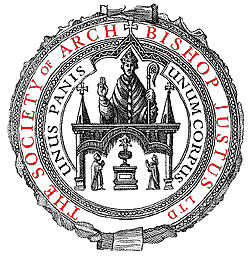 November 10, 627 - Saint Justus died. The fourth archbishop of Canterbury, Justus had a role in converting Northumbria to Christianity.
November 10, 627 - Saint Justus died. The fourth archbishop of Canterbury, Justus had a role in converting Northumbria to Christianity. 1444 - The Battle of Varna: The Turkish victory oveer a Hungarian force ended the efforts of European powers to save Constantinople from Turkish conquest.
1444 - The Battle of Varna: The Turkish victory oveer a Hungarian force ended the efforts of European powers to save Constantinople from Turkish conquest. 1619 - Rene Descartes had the dreams that inspired his Meditations on First Philosophy.
1619 - Rene Descartes had the dreams that inspired his Meditations on First Philosophy.
Published on November 10, 2015 02:00
November 9, 2015
Ancient Greek Fortress Found in Jerusalem Parking Lot
Discovery News
by Rossella Lorenzi
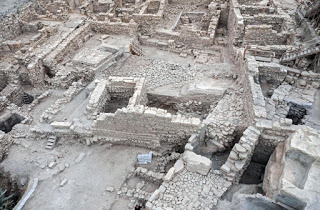 Shown are the remains of the citadel and tower.
Shown are the remains of the citadel and tower.
Assaf Peretz, courtesy of the Israel Antiquities Authority
 GalleryFemaleSculpturesRevealedinGreekTomb:PhotosView Caption +#1: The two Caryatids are fully revealed. Greek Ministry of Culture
GalleryFemaleSculpturesRevealedinGreekTomb:PhotosView Caption +#1: The two Caryatids are fully revealed. Greek Ministry of Culture View Caption +#2: The statues wear high-soled red-and-yellow shoes. Greek Ministry of Culture
View Caption +#2: The statues wear high-soled red-and-yellow shoes. Greek Ministry of Culture View Caption +#3: Their toes are finely carved, as the rest of their bodies. Greek Ministry of Culture
View Caption +#3: Their toes are finely carved, as the rest of their bodies. Greek Ministry of Culture View Caption + This drawing shows the tomb reconstruction according to the ongoing excavation.Greek Ministry of Culture
View Caption + This drawing shows the tomb reconstruction according to the ongoing excavation.Greek Ministry of Culture View Caption + Two finely carved female figures called Caryatids have been unearthed inside the mysterious tomb-in Amphipolis, which dates from the time of Alexander the Great. BLOG: Female Sculptures Guard Mysterious Tomb in Greece Greek Ministry of Culture
View Caption + Two finely carved female figures called Caryatids have been unearthed inside the mysterious tomb-in Amphipolis, which dates from the time of Alexander the Great. BLOG: Female Sculptures Guard Mysterious Tomb in Greece Greek Ministry of Culture View Caption + Wearing a sleeved tunic and earrings, the Caryatids feature long, thick hair covering their shoulders. BLOG: Mosaics Revealed at Alexander the Great-Era Tomb Greek Ministry of Culture
View Caption + Wearing a sleeved tunic and earrings, the Caryatids feature long, thick hair covering their shoulders. BLOG: Mosaics Revealed at Alexander the Great-Era Tomb Greek Ministry of Culture View Caption + While the face of one sculpture survives nearly intact, the other is missing. PHOTOS: Accidental Archaeological Discoveries Greek Ministry of Culture
View Caption + While the face of one sculpture survives nearly intact, the other is missing. PHOTOS: Accidental Archaeological Discoveries Greek Ministry of Culture View Caption + The right arm of one Caryatid and the left arm of the other are both outstretched, as if to symbolically prevent anyone from attempting to enter the grave. BLOG: ‘Alexander the Sexy’ Seen in New PortraitGreek Ministry of Culture
View Caption + The right arm of one Caryatid and the left arm of the other are both outstretched, as if to symbolically prevent anyone from attempting to enter the grave. BLOG: ‘Alexander the Sexy’ Seen in New PortraitGreek Ministry of Culture View Caption + A perfectly preserved rectangular marble block, measuring 14 feet long and 3 feet wide, was unearthed at the bottom of the barrel vault. BLOG: Sphinxes Emerge From Huge Ancient Greek TombGreek Ministry of Culture
View Caption + A perfectly preserved rectangular marble block, measuring 14 feet long and 3 feet wide, was unearthed at the bottom of the barrel vault. BLOG: Sphinxes Emerge From Huge Ancient Greek TombGreek Ministry of Culture View Caption + On the underside of the large marble block are traces of blue, red and yellow, representing panels with rosettes in the center. Other rosettes were previously found embossed on a marble beam. VIDEO: Ancient Lost Army Found?Greek Ministry of Culture
View Caption + On the underside of the large marble block are traces of blue, red and yellow, representing panels with rosettes in the center. Other rosettes were previously found embossed on a marble beam. VIDEO: Ancient Lost Army Found?Greek Ministry of Culture
The remnants of the Acra, a fortress built by the Greek King Antiochus IV more than 2,000 years ago and sought for over 100 years, has emerged from a parking lot in Jerusalem, Israeli archaeologists said Tuesday.
Mentioned in Jewish biblical sources and by historians like Josephus Flavius, the fortress was unearthed after 10 years of excavations under the parking lot.
The discovery solved “one of Jerusalem’s greatest archaeological mysteries,” the Israel Antiquities Authority (IAA) said.
Ancient Aqueduct Unearthed In Jerusalem
The archaeologists unearthed a section of a massive wall, which they said was the base of an imposing tower measuring 66 feet long and 13 feet wide. In addition, the wall’s outer base was coated with layers of soil, stone and plaster. The specially designed slippery slope was meant to keep attackers away.
“This stronghold controlled all means of approach to the Temple atop the Temple Mount, and cut the Temple off from the southern parts of the city,” said Doron Ben-Ami, Yana Tchekhanovets and Salome Cohen, excavation directors on behalf of the Israel Antiquities Authority.
Coins dating from the reign of Antiochus IV to that of Antiochus VII, as well as wine jars imported from the Aegean region were also unearthed, providing evidence of the citadel’s chronology, as well as the non-Jewish identity of its inhabitants.
Mysterious 2,000-Year-Old Podium Found in Jerusalem
Among the ruins, the archaeologists also discovered lead slingshots, bronze arrowheads and stone catapults, all stamped with a trident, which symbolized the reign of Antiochus Epiphanes (215-164 BC).
“They are the silent remains of battles that were waged there at the time of the Hasmoneans, in their attempt to conquer the citadel which was viewed as a ‘thorn in the flesh’ of the city,” the IAA said.
According to historical sources, the Acra fortress was occupied by mercenaries, and Hellenized Jews which produced great sufferings in Jerusalem’s residents.
Video: Discovering the 'Cave of Forgotten Dreams'
The stronghold withstood all attempts at conquest and only in 141 BC was it conquered by the Hasmonean king Simon Maccabeus, after a long siege and the starvation of the Greek defenders.
“This sensational discovery allows us for the first time to reconstruct the layout of the settlement in the city, on the eve of the Maccabean uprising in 167 BC,” the archaeologists said.
by Rossella Lorenzi
 Shown are the remains of the citadel and tower.
Shown are the remains of the citadel and tower.Assaf Peretz, courtesy of the Israel Antiquities Authority

 GalleryFemaleSculpturesRevealedinGreekTomb:PhotosView Caption +#1: The two Caryatids are fully revealed. Greek Ministry of Culture
GalleryFemaleSculpturesRevealedinGreekTomb:PhotosView Caption +#1: The two Caryatids are fully revealed. Greek Ministry of Culture View Caption +#2: The statues wear high-soled red-and-yellow shoes. Greek Ministry of Culture
View Caption +#2: The statues wear high-soled red-and-yellow shoes. Greek Ministry of Culture View Caption +#3: Their toes are finely carved, as the rest of their bodies. Greek Ministry of Culture
View Caption +#3: Their toes are finely carved, as the rest of their bodies. Greek Ministry of Culture View Caption + This drawing shows the tomb reconstruction according to the ongoing excavation.Greek Ministry of Culture
View Caption + This drawing shows the tomb reconstruction according to the ongoing excavation.Greek Ministry of Culture View Caption + Two finely carved female figures called Caryatids have been unearthed inside the mysterious tomb-in Amphipolis, which dates from the time of Alexander the Great. BLOG: Female Sculptures Guard Mysterious Tomb in Greece Greek Ministry of Culture
View Caption + Two finely carved female figures called Caryatids have been unearthed inside the mysterious tomb-in Amphipolis, which dates from the time of Alexander the Great. BLOG: Female Sculptures Guard Mysterious Tomb in Greece Greek Ministry of Culture View Caption + Wearing a sleeved tunic and earrings, the Caryatids feature long, thick hair covering their shoulders. BLOG: Mosaics Revealed at Alexander the Great-Era Tomb Greek Ministry of Culture
View Caption + Wearing a sleeved tunic and earrings, the Caryatids feature long, thick hair covering their shoulders. BLOG: Mosaics Revealed at Alexander the Great-Era Tomb Greek Ministry of Culture View Caption + While the face of one sculpture survives nearly intact, the other is missing. PHOTOS: Accidental Archaeological Discoveries Greek Ministry of Culture
View Caption + While the face of one sculpture survives nearly intact, the other is missing. PHOTOS: Accidental Archaeological Discoveries Greek Ministry of Culture View Caption + The right arm of one Caryatid and the left arm of the other are both outstretched, as if to symbolically prevent anyone from attempting to enter the grave. BLOG: ‘Alexander the Sexy’ Seen in New PortraitGreek Ministry of Culture
View Caption + The right arm of one Caryatid and the left arm of the other are both outstretched, as if to symbolically prevent anyone from attempting to enter the grave. BLOG: ‘Alexander the Sexy’ Seen in New PortraitGreek Ministry of Culture View Caption + A perfectly preserved rectangular marble block, measuring 14 feet long and 3 feet wide, was unearthed at the bottom of the barrel vault. BLOG: Sphinxes Emerge From Huge Ancient Greek TombGreek Ministry of Culture
View Caption + A perfectly preserved rectangular marble block, measuring 14 feet long and 3 feet wide, was unearthed at the bottom of the barrel vault. BLOG: Sphinxes Emerge From Huge Ancient Greek TombGreek Ministry of Culture View Caption + On the underside of the large marble block are traces of blue, red and yellow, representing panels with rosettes in the center. Other rosettes were previously found embossed on a marble beam. VIDEO: Ancient Lost Army Found?Greek Ministry of Culture
View Caption + On the underside of the large marble block are traces of blue, red and yellow, representing panels with rosettes in the center. Other rosettes were previously found embossed on a marble beam. VIDEO: Ancient Lost Army Found?Greek Ministry of CultureThe remnants of the Acra, a fortress built by the Greek King Antiochus IV more than 2,000 years ago and sought for over 100 years, has emerged from a parking lot in Jerusalem, Israeli archaeologists said Tuesday.
Mentioned in Jewish biblical sources and by historians like Josephus Flavius, the fortress was unearthed after 10 years of excavations under the parking lot.
The discovery solved “one of Jerusalem’s greatest archaeological mysteries,” the Israel Antiquities Authority (IAA) said.
Ancient Aqueduct Unearthed In Jerusalem
The archaeologists unearthed a section of a massive wall, which they said was the base of an imposing tower measuring 66 feet long and 13 feet wide. In addition, the wall’s outer base was coated with layers of soil, stone and plaster. The specially designed slippery slope was meant to keep attackers away.
“This stronghold controlled all means of approach to the Temple atop the Temple Mount, and cut the Temple off from the southern parts of the city,” said Doron Ben-Ami, Yana Tchekhanovets and Salome Cohen, excavation directors on behalf of the Israel Antiquities Authority.
Coins dating from the reign of Antiochus IV to that of Antiochus VII, as well as wine jars imported from the Aegean region were also unearthed, providing evidence of the citadel’s chronology, as well as the non-Jewish identity of its inhabitants.
Mysterious 2,000-Year-Old Podium Found in Jerusalem
Among the ruins, the archaeologists also discovered lead slingshots, bronze arrowheads and stone catapults, all stamped with a trident, which symbolized the reign of Antiochus Epiphanes (215-164 BC).
“They are the silent remains of battles that were waged there at the time of the Hasmoneans, in their attempt to conquer the citadel which was viewed as a ‘thorn in the flesh’ of the city,” the IAA said.
According to historical sources, the Acra fortress was occupied by mercenaries, and Hellenized Jews which produced great sufferings in Jerusalem’s residents.
Video: Discovering the 'Cave of Forgotten Dreams'
The stronghold withstood all attempts at conquest and only in 141 BC was it conquered by the Hasmonean king Simon Maccabeus, after a long siege and the starvation of the Greek defenders.
“This sensational discovery allows us for the first time to reconstruct the layout of the settlement in the city, on the eve of the Maccabean uprising in 167 BC,” the archaeologists said.
Published on November 09, 2015 03:00
History Trivia - Peace of Etaples
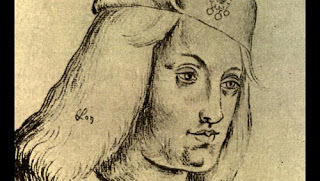 Perkin Warbeck
Perkin WarbeckNovember 9, 1492 - Peace of Etaples (northern France) between Henry VII and Charles VIII. The treaty served to end an English invasion of France launched in order to stop France's support for the pretender Perkin Warbeck. By this treaty, France agreed to expel Warbeck and pay England an indemnity of 159,000 British pounds. The treaty was ratified in December.

1494 The de'Medici family were expelled from Florence.

1541 Queen Catherine Howard was confined in London Tower.
Published on November 09, 2015 01:30
November 8, 2015
Search for Secret Chambers in King Tut's Tomb Begins
Discovery News
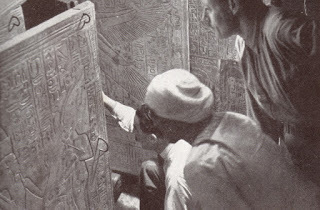 Howard Carter opens King Tut’s tomb.Harry Burton/Wikimedia Commons
Howard Carter opens King Tut’s tomb.Harry Burton/Wikimedia Commons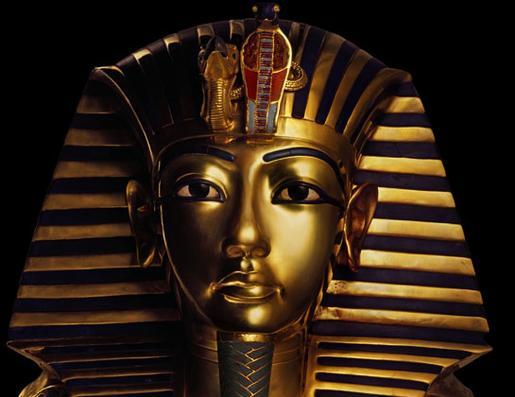
 Gallery InsideKingTut'sTombView Caption +#1: King Tut's Mask
Gallery InsideKingTut'sTombView Caption +#1: King Tut's Mask
"Tutankhamun: His Tomb and the Treasures" is a new exhibition now in Zurich that has meticulously reconstructed the tomb complex and its treasures. Specially trained craftspeople in Cairo built more than 1,000 exact replicas under scientific supervision. The work took over five years. Here is a replica of the famous mask of King Tut, weighing 24 lbs, which was pressed over the head of the king's bandaged mummy. The idealized portrait of the young king echoes the style of the late Amarna period. The life-like eyes are formed by bright quartz, with obsidian inlays for the pupils.
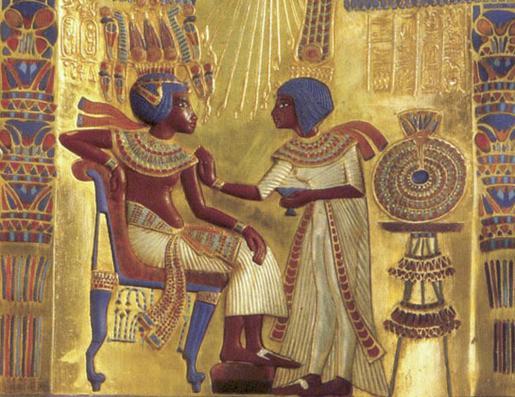 View Caption +#2: King Tut, With Wife This scene, depicted on the backrest of King Tut's throne, shows how Tutankhamen used to lean back in a relaxed manner while his wife, Anchesenamun, stood beside him and rubbed ointment into his shoulder.
View Caption +#2: King Tut, With Wife This scene, depicted on the backrest of King Tut's throne, shows how Tutankhamen used to lean back in a relaxed manner while his wife, Anchesenamun, stood beside him and rubbed ointment into his shoulder.
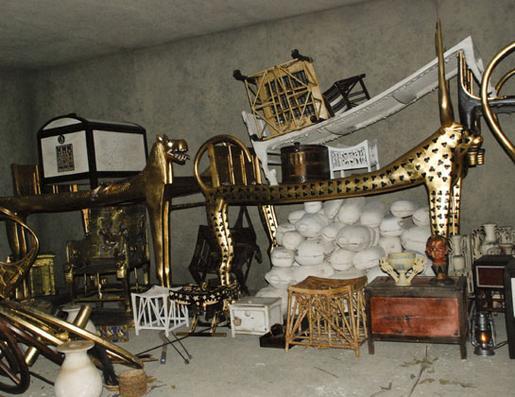 View Caption +#3: Tomb Discovery This is how the tomb of the boy king Tutankhamun appeared to archaeologist Howard Carter when he discovered it in 1922.
View Caption +#3: Tomb Discovery This is how the tomb of the boy king Tutankhamun appeared to archaeologist Howard Carter when he discovered it in 1922.
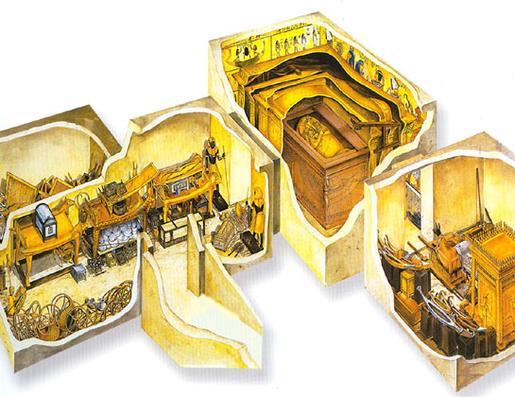 View Caption +#4: King Tut's Tomb in 3-D Tutankhamun's tomb and its contents, as viewed in a 3-D model. A corridor led to an antechamber and an annex filled with objects. The antechamber opened into the coffin chamber with King Tut's sarcophagus. The coffin chamber led to another small room filled with King Tut's treasures.
View Caption +#4: King Tut's Tomb in 3-D Tutankhamun's tomb and its contents, as viewed in a 3-D model. A corridor led to an antechamber and an annex filled with objects. The antechamber opened into the coffin chamber with King Tut's sarcophagus. The coffin chamber led to another small room filled with King Tut's treasures.
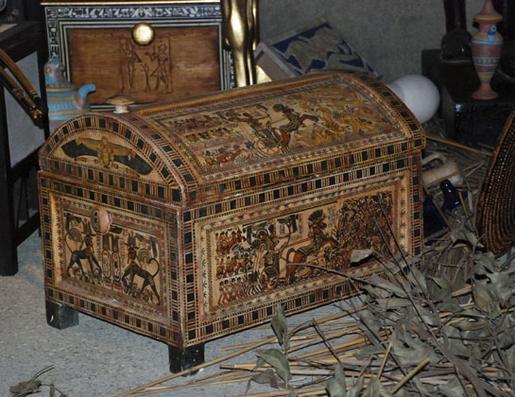 View Caption +#5: Treasures Galore Two tiny mummified female fetuses were found in the tomb with the king. But they were not the only companions placed in the tomb for King Tut's journey to the afterlife. The boy king was buried with more than 5,000 priceless objects, including this treasure chest.
View Caption +#5: Treasures Galore Two tiny mummified female fetuses were found in the tomb with the king. But they were not the only companions placed in the tomb for King Tut's journey to the afterlife. The boy king was buried with more than 5,000 priceless objects, including this treasure chest.
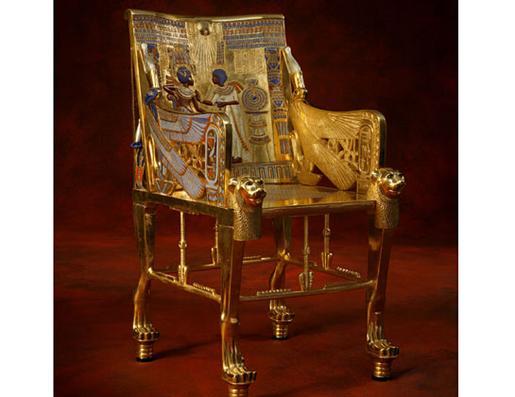 View Caption +#6: Boy Throne The famous gold throne found in the tomb was ordered when Tutankhamen became king at the age of nine.
View Caption +#6: Boy Throne The famous gold throne found in the tomb was ordered when Tutankhamen became king at the age of nine.
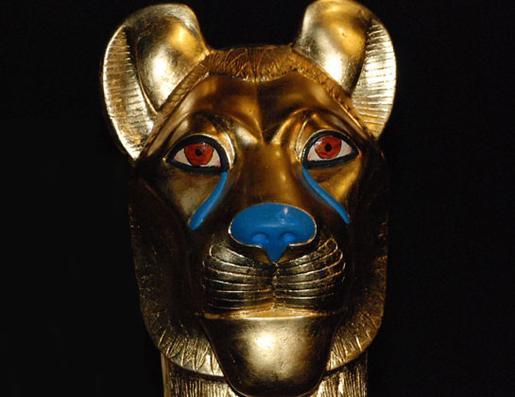 View Caption +#7: Lion Head The dead king in the underworld was akin to the sun at night and, in the New Kingdom, this was identified with the god of death, Osiris. The heads of lions corresponded to the time the sun god spent in the body of the god of heaven in feline form. The facial details of the lion head –- the rims of the eyes, tip of the nose and tear ducts -- are given almost life-like properties through the use of glass.
View Caption +#7: Lion Head The dead king in the underworld was akin to the sun at night and, in the New Kingdom, this was identified with the god of death, Osiris. The heads of lions corresponded to the time the sun god spent in the body of the god of heaven in feline form. The facial details of the lion head –- the rims of the eyes, tip of the nose and tear ducts -- are given almost life-like properties through the use of glass.
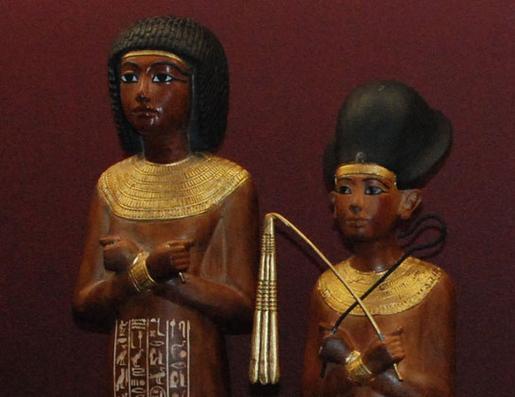 View Caption +#8: Hired Help for the Afterlife These figures were supposed to take the place of the king in performing the daily tasks that came up in the afterlife. A total of 413 of these figures, known as ushabtis, were found in Tutankhamun's tomb. Among the collection, 365 were responsible for carrying out day-to-day duties, 36 ushabtis served as overseers for groups of 10 workers each, and 12 acted as monthly supervisors
View Caption +#8: Hired Help for the Afterlife These figures were supposed to take the place of the king in performing the daily tasks that came up in the afterlife. A total of 413 of these figures, known as ushabtis, were found in Tutankhamun's tomb. Among the collection, 365 were responsible for carrying out day-to-day duties, 36 ushabtis served as overseers for groups of 10 workers each, and 12 acted as monthly supervisors
An investigation of King Tut’s tomb to find secret chambers will begin tomorrow and will last until Friday, Egypt’s Minister of Antiquity announced on Wednesday.
The announcement, reported in the Egyptian media, comes on the 93rd anniversary of the tomb’s discovery in the Valley of the Kings in Luxor. On this day in 1922, British archaeologist Howard Carter found the entrance to King Tutankhamun’s treasure-filled tomb.
A team from Cairo University’s Faculty of Engineering and the Paris-based organization Heritage, Innovation and Preservation will investigate the tomb using infrared thermography.
PHOTOS: Inside King Tut's Tomb
The non-invasive search follows a claim by Nicholas Reeves, a British Egyptologist at the University of Arizona, that high-resolution images of the tomb’s walls show “distinct linear traces” pointing to the presence of two still unexplored chambers behind the western and northern walls of the tomb.
According to Reeves, one chamber contains the remains, and possibly the intact grave goods, of queen Nefertiti, the wife of the “heretic” monotheistic pharaoh Akhenaten, Tutankhamun’s father.
He argued that a painting located behind King Tut’s sarcophagus has been wrongly interpreted. Egyptologists have always believed the scene shows Ay (who largely directed King Tut’s reign and succeeded him) performing the Opening of the Mouth ritual on the boy king.
Tut’s Funeral: Burying the Boy King
Reeves believes the figure labelled Tutankhamun is actually Nefertiti. He noted that a line at the side of the figure’s mouth, called “oromental groove,” is a trademark in pictures of Nefertiti. On the other hand, the figure labelled Ay would be Tutankhamun, completing the death ritual for Nefertiti.
Reeves speculated that the tomb of King Tut was not ready when he died unexpectedly at 19 in 1323 B.C. after having ruled a short reign of nine to 10 years. Consequently, he was buried in a rush in what was originally Nefertiti’s tomb, who had died 10 years earlier.
An examination of King Tut’s tomb in September revealed several unusual features, such as a contrast in the materials that cover different parts of the same wall and an extended ceiling which suggests King Tut’s burial chamber was originally a corridor.
Weird Facts About King Tut and His Mummy
After the visual examination, Egypt’s Antiquities minister Mamdouh al-Damaty agreed it was very likely that there were hidden chambers in the tomb.
However, he disagreed with Reeves on the Nefertiti claim.
An international team of researchers led by mummy expert Frank Rühli, director of the Institute of Evolutionary Medicine at the University of Zurich, also cautioned last month about the possibility of Nefertiti being the occupant of the secret crypt.
“Queen Nefertiti might be the already found Younger Lady,” Rühli said.
Who Else May Be in King Tut’s Tomb?
The “Younger Lady” is a mummy found in 1898 by archaeologist Victor Loret in tomb KV35 in the Valley of the Kings.
Nefertiti is labelled in inscriptions to be Tutankhamun’s mother; genetic analyses identified the “Younger Lady” as the mother of Tutankhamun.
Such evidence would automatically rule out Nefertiti, the researchers concluded.
King Tut Felled by Malaria, Bone Disease
If a mummy is found, it could belong to the elusive pharaoh Smenkhkare, or to queen Meritaton, the full or half sister of Tutankhamun, they added.
It is also possible that nothing at all will be found behind those walls.
“The possible findings range from nothing at all or unfinished and closed corridors to storage chambers or intact burials with treasures,” Rühli told Discovery News.
by Rossella Lorenzi
 Howard Carter opens King Tut’s tomb.Harry Burton/Wikimedia Commons
Howard Carter opens King Tut’s tomb.Harry Burton/Wikimedia Commons
 Gallery InsideKingTut'sTombView Caption +#1: King Tut's Mask
Gallery InsideKingTut'sTombView Caption +#1: King Tut's Mask"Tutankhamun: His Tomb and the Treasures" is a new exhibition now in Zurich that has meticulously reconstructed the tomb complex and its treasures. Specially trained craftspeople in Cairo built more than 1,000 exact replicas under scientific supervision. The work took over five years. Here is a replica of the famous mask of King Tut, weighing 24 lbs, which was pressed over the head of the king's bandaged mummy. The idealized portrait of the young king echoes the style of the late Amarna period. The life-like eyes are formed by bright quartz, with obsidian inlays for the pupils.
 View Caption +#2: King Tut, With Wife This scene, depicted on the backrest of King Tut's throne, shows how Tutankhamen used to lean back in a relaxed manner while his wife, Anchesenamun, stood beside him and rubbed ointment into his shoulder.
View Caption +#2: King Tut, With Wife This scene, depicted on the backrest of King Tut's throne, shows how Tutankhamen used to lean back in a relaxed manner while his wife, Anchesenamun, stood beside him and rubbed ointment into his shoulder. View Caption +#3: Tomb Discovery This is how the tomb of the boy king Tutankhamun appeared to archaeologist Howard Carter when he discovered it in 1922.
View Caption +#3: Tomb Discovery This is how the tomb of the boy king Tutankhamun appeared to archaeologist Howard Carter when he discovered it in 1922. View Caption +#4: King Tut's Tomb in 3-D Tutankhamun's tomb and its contents, as viewed in a 3-D model. A corridor led to an antechamber and an annex filled with objects. The antechamber opened into the coffin chamber with King Tut's sarcophagus. The coffin chamber led to another small room filled with King Tut's treasures.
View Caption +#4: King Tut's Tomb in 3-D Tutankhamun's tomb and its contents, as viewed in a 3-D model. A corridor led to an antechamber and an annex filled with objects. The antechamber opened into the coffin chamber with King Tut's sarcophagus. The coffin chamber led to another small room filled with King Tut's treasures. View Caption +#5: Treasures Galore Two tiny mummified female fetuses were found in the tomb with the king. But they were not the only companions placed in the tomb for King Tut's journey to the afterlife. The boy king was buried with more than 5,000 priceless objects, including this treasure chest.
View Caption +#5: Treasures Galore Two tiny mummified female fetuses were found in the tomb with the king. But they were not the only companions placed in the tomb for King Tut's journey to the afterlife. The boy king was buried with more than 5,000 priceless objects, including this treasure chest. View Caption +#6: Boy Throne The famous gold throne found in the tomb was ordered when Tutankhamen became king at the age of nine.
View Caption +#6: Boy Throne The famous gold throne found in the tomb was ordered when Tutankhamen became king at the age of nine. View Caption +#7: Lion Head The dead king in the underworld was akin to the sun at night and, in the New Kingdom, this was identified with the god of death, Osiris. The heads of lions corresponded to the time the sun god spent in the body of the god of heaven in feline form. The facial details of the lion head –- the rims of the eyes, tip of the nose and tear ducts -- are given almost life-like properties through the use of glass.
View Caption +#7: Lion Head The dead king in the underworld was akin to the sun at night and, in the New Kingdom, this was identified with the god of death, Osiris. The heads of lions corresponded to the time the sun god spent in the body of the god of heaven in feline form. The facial details of the lion head –- the rims of the eyes, tip of the nose and tear ducts -- are given almost life-like properties through the use of glass. View Caption +#8: Hired Help for the Afterlife These figures were supposed to take the place of the king in performing the daily tasks that came up in the afterlife. A total of 413 of these figures, known as ushabtis, were found in Tutankhamun's tomb. Among the collection, 365 were responsible for carrying out day-to-day duties, 36 ushabtis served as overseers for groups of 10 workers each, and 12 acted as monthly supervisors
View Caption +#8: Hired Help for the Afterlife These figures were supposed to take the place of the king in performing the daily tasks that came up in the afterlife. A total of 413 of these figures, known as ushabtis, were found in Tutankhamun's tomb. Among the collection, 365 were responsible for carrying out day-to-day duties, 36 ushabtis served as overseers for groups of 10 workers each, and 12 acted as monthly supervisorsAn investigation of King Tut’s tomb to find secret chambers will begin tomorrow and will last until Friday, Egypt’s Minister of Antiquity announced on Wednesday.
The announcement, reported in the Egyptian media, comes on the 93rd anniversary of the tomb’s discovery in the Valley of the Kings in Luxor. On this day in 1922, British archaeologist Howard Carter found the entrance to King Tutankhamun’s treasure-filled tomb.
A team from Cairo University’s Faculty of Engineering and the Paris-based organization Heritage, Innovation and Preservation will investigate the tomb using infrared thermography.
PHOTOS: Inside King Tut's Tomb
The non-invasive search follows a claim by Nicholas Reeves, a British Egyptologist at the University of Arizona, that high-resolution images of the tomb’s walls show “distinct linear traces” pointing to the presence of two still unexplored chambers behind the western and northern walls of the tomb.
According to Reeves, one chamber contains the remains, and possibly the intact grave goods, of queen Nefertiti, the wife of the “heretic” monotheistic pharaoh Akhenaten, Tutankhamun’s father.
He argued that a painting located behind King Tut’s sarcophagus has been wrongly interpreted. Egyptologists have always believed the scene shows Ay (who largely directed King Tut’s reign and succeeded him) performing the Opening of the Mouth ritual on the boy king.
Tut’s Funeral: Burying the Boy King
Reeves believes the figure labelled Tutankhamun is actually Nefertiti. He noted that a line at the side of the figure’s mouth, called “oromental groove,” is a trademark in pictures of Nefertiti. On the other hand, the figure labelled Ay would be Tutankhamun, completing the death ritual for Nefertiti.
Reeves speculated that the tomb of King Tut was not ready when he died unexpectedly at 19 in 1323 B.C. after having ruled a short reign of nine to 10 years. Consequently, he was buried in a rush in what was originally Nefertiti’s tomb, who had died 10 years earlier.
An examination of King Tut’s tomb in September revealed several unusual features, such as a contrast in the materials that cover different parts of the same wall and an extended ceiling which suggests King Tut’s burial chamber was originally a corridor.
Weird Facts About King Tut and His Mummy
After the visual examination, Egypt’s Antiquities minister Mamdouh al-Damaty agreed it was very likely that there were hidden chambers in the tomb.
However, he disagreed with Reeves on the Nefertiti claim.
An international team of researchers led by mummy expert Frank Rühli, director of the Institute of Evolutionary Medicine at the University of Zurich, also cautioned last month about the possibility of Nefertiti being the occupant of the secret crypt.
“Queen Nefertiti might be the already found Younger Lady,” Rühli said.
Who Else May Be in King Tut’s Tomb?
The “Younger Lady” is a mummy found in 1898 by archaeologist Victor Loret in tomb KV35 in the Valley of the Kings.
Nefertiti is labelled in inscriptions to be Tutankhamun’s mother; genetic analyses identified the “Younger Lady” as the mother of Tutankhamun.
Such evidence would automatically rule out Nefertiti, the researchers concluded.
King Tut Felled by Malaria, Bone Disease
If a mummy is found, it could belong to the elusive pharaoh Smenkhkare, or to queen Meritaton, the full or half sister of Tutankhamun, they added.
It is also possible that nothing at all will be found behind those walls.
“The possible findings range from nothing at all or unfinished and closed corridors to storage chambers or intact burials with treasures,” Rühli told Discovery News.
by Rossella Lorenzi
Published on November 08, 2015 03:00
History Trivia - Roman Emperor Theodosius prohibits pagan worship
November 8
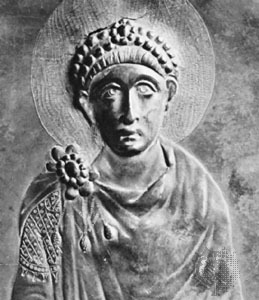
392 Roman Emperor Theodosius passed legislation prohibiting all pagan worship in the empire.

1308 John Duns Scotus died. He was an influential Franciscan philosopher and theologian who pioneered the theory of the Immaculate Conception.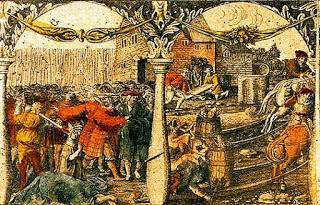
1520 Stockholm Bloodbath began: A successful invasion of Sweden by Danish forces resulted in the execution of around 100 people.

392 Roman Emperor Theodosius passed legislation prohibiting all pagan worship in the empire.

1308 John Duns Scotus died. He was an influential Franciscan philosopher and theologian who pioneered the theory of the Immaculate Conception.

1520 Stockholm Bloodbath began: A successful invasion of Sweden by Danish forces resulted in the execution of around 100 people.
Published on November 08, 2015 01:30
November 7, 2015
Mary Ann Bernal Talks About Writing on Talk Story Media - November 10, 2015 from 9:30am to 10am Mountain Time
Talk Story MediaTalkStoryTV.com * TalkStoryRadio.us * Webinar.Center *


Mary Ann Bernal Talks About WritingEvent Details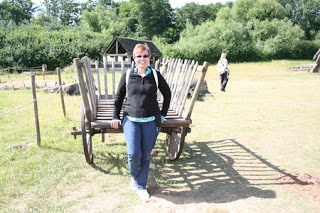 Time: November 10, 2015 from 9:30am to 10am
Time: November 10, 2015 from 9:30am to 10am
Location: TalkStoryRadio.us
Website or Map: http://TalkStoryRadio.us
Phone: 970-462-7132
Event Type: radio, show
Organized By: Julia Widdop
Latest Activity: 1 hour ago
Event Description
Mary Ann Bernal, author of The Briton and Dane and Scribbler Tales franchises, discusses her books, providing insight into how it all began, turning a dream into reality. Bernal shares her experiences in an extremely competitive business, refusing to give up despite the odds. Reading passages from her work, Bernal provides a taste of the worlds her characters inhabit where treachery abound and where love flourishes in the midst of turmoil.



Mary Ann Bernal Talks About WritingEvent Details
 Time: November 10, 2015 from 9:30am to 10am
Time: November 10, 2015 from 9:30am to 10amLocation: TalkStoryRadio.us
Website or Map: http://TalkStoryRadio.us
Phone: 970-462-7132
Event Type: radio, show
Organized By: Julia Widdop
Latest Activity: 1 hour ago
Event Description
Mary Ann Bernal, author of The Briton and Dane and Scribbler Tales franchises, discusses her books, providing insight into how it all began, turning a dream into reality. Bernal shares her experiences in an extremely competitive business, refusing to give up despite the odds. Reading passages from her work, Bernal provides a taste of the worlds her characters inhabit where treachery abound and where love flourishes in the midst of turmoil.

Published on November 07, 2015 09:20
History Trivia - The Ensisheim Meteorite strikes Alsace, France
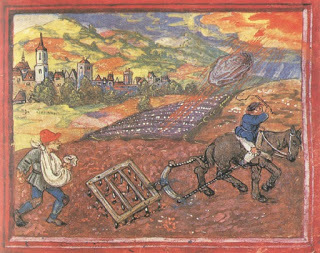 November 7, 1492 - The Ensisheim Meterorite, the oldest meterorite with a known date of impact, struck the earth around noon in a wheat field outside the village of Ensisheim, Alsace, France.
November 7, 1492 - The Ensisheim Meterorite, the oldest meterorite with a known date of impact, struck the earth around noon in a wheat field outside the village of Ensisheim, Alsace, France.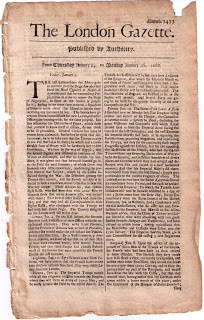 1665 - The London Gazette, the oldest surviving journal, was first published.
1665 - The London Gazette, the oldest surviving journal, was first published.
Published on November 07, 2015 02:30
War limits study of Roman Syrian sites, but one has yielded priceless treasures of the past
Ancient Origins
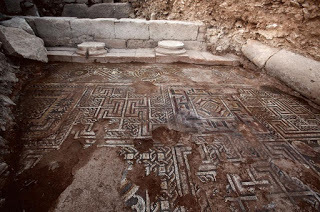 The war has so disrupted parts of the Near East that scholars have just a few Roman Empire sites to study in what was the Roman province of Syria. But archaeologists are able to work a few sites, including Doliche in what is now Turkey, where they have recently discovered a wonderful floor mosaic with a delicate pattern, houses, alleys and water pipelines that will give them a look into the ancient people’s daily lives.
The war has so disrupted parts of the Near East that scholars have just a few Roman Empire sites to study in what was the Roman province of Syria. But archaeologists are able to work a few sites, including Doliche in what is now Turkey, where they have recently discovered a wonderful floor mosaic with a delicate pattern, houses, alleys and water pipelines that will give them a look into the ancient people’s daily lives.
It is important to study such places because urban centers of this kind have barely been explored, and others, such as Apamea and Cyrrhus, have been destroyed, say researchers from the University of Münster in Germany.
The team of researchers plans to extend excavations from private homes into public areas of the ancient city. They hope to gain insight into the city of Doliche and its residents from the Greek era through the Crusades.
 Archaeologists excavate the abbey of St. Solomon at Dülük Baba Tepesi, which is a mountain near Doliche where Romans and later Christians worshiped their various gods. (
Photo by the University of Münster
)
Archaeologists excavate the abbey of St. Solomon at Dülük Baba Tepesi, which is a mountain near Doliche where Romans and later Christians worshiped their various gods. (
Photo by the University of Münster
)
Human habitation at the site of Doliche goes back much further than 2,000 years or so. The team of archaeologists from the University of Münster also has been excavating a nearby overhanging rock shelter that dates from between 600,000 BC to 300,000 BC. People settled there because of the presence of flint, from which they could make stone tools, said Professor Winter. He called the site central to the early history of mankind.
 The dig turned up the bronze figurine of a stag dating to the first millennium BC at the mountain of Dülük Baba Tepesi, which neighbors Doliche. (
Photo by the University of Münster
)At a related dig, the neighboring mountain of Dülük Baba Tepesi, archaeologists for 15 years have been excavating the sanctuary of Iuppiter Dolichenus (who is not truly the same as Roman Jupiter), which the press release calls one of the most important gods of the Roman Iron Age. The site was used as a temple or sanctuary as far back as the ninth century BC, which makes it much older than researchers initially thought. As confirmation of this, they found a high-quality bronze figure of a stag dating to the first millennium BC. They also have discovered and have been excavating well-preserved parts of a wall enclosing the Roman sanctuary and parts of Christian abbey that was established on the mountaintop after the heathen cult there ended.
The dig turned up the bronze figurine of a stag dating to the first millennium BC at the mountain of Dülük Baba Tepesi, which neighbors Doliche. (
Photo by the University of Münster
)At a related dig, the neighboring mountain of Dülük Baba Tepesi, archaeologists for 15 years have been excavating the sanctuary of Iuppiter Dolichenus (who is not truly the same as Roman Jupiter), which the press release calls one of the most important gods of the Roman Iron Age. The site was used as a temple or sanctuary as far back as the ninth century BC, which makes it much older than researchers initially thought. As confirmation of this, they found a high-quality bronze figure of a stag dating to the first millennium BC. They also have discovered and have been excavating well-preserved parts of a wall enclosing the Roman sanctuary and parts of Christian abbey that was established on the mountaintop after the heathen cult there ended.
Featured image: This delicately elaborate mosaic has been excavated from a possible rich person’s villa in Roman Doliche, one of the few areas in Roman Syria where archaeologists can work. ( Photo by the University of Münster )
By: Mark Miller
 The war has so disrupted parts of the Near East that scholars have just a few Roman Empire sites to study in what was the Roman province of Syria. But archaeologists are able to work a few sites, including Doliche in what is now Turkey, where they have recently discovered a wonderful floor mosaic with a delicate pattern, houses, alleys and water pipelines that will give them a look into the ancient people’s daily lives.
The war has so disrupted parts of the Near East that scholars have just a few Roman Empire sites to study in what was the Roman province of Syria. But archaeologists are able to work a few sites, including Doliche in what is now Turkey, where they have recently discovered a wonderful floor mosaic with a delicate pattern, houses, alleys and water pipelines that will give them a look into the ancient people’s daily lives.It is important to study such places because urban centers of this kind have barely been explored, and others, such as Apamea and Cyrrhus, have been destroyed, say researchers from the University of Münster in Germany.
“The situation today at the site of Apamea, one of the most important ancient cities of Syria, is particularly bad,” said archaeologist Englebert Winter the University of Münster’s Asia Minor Research Centre in a press release. “Illicit excavations, clearly visible in satellite imagery, have destroyed the entire urban area. It remains doubtful if research there will ever be possible again. The excavations in Cyrrhus, which had recently been resumed, also had to be stopped due to the current situation.”Antioch, an ancient city and capital of the Roman province of Syria, is inaccessible because of modern construction. Therefore Doliche is very important. Winter said it will provide new information about the ancient urban culture of northern Syria.
The team of researchers plans to extend excavations from private homes into public areas of the ancient city. They hope to gain insight into the city of Doliche and its residents from the Greek era through the Crusades.
 Archaeologists excavate the abbey of St. Solomon at Dülük Baba Tepesi, which is a mountain near Doliche where Romans and later Christians worshiped their various gods. (
Photo by the University of Münster
)
Archaeologists excavate the abbey of St. Solomon at Dülük Baba Tepesi, which is a mountain near Doliche where Romans and later Christians worshiped their various gods. (
Photo by the University of Münster
)“The most outstanding discovery of our excavations is a high-quality mosaic floor in a splendid complex of buildings with a court enclosed by columns that originally covered more than 100 square meters [328 square feet],” archaeologist Michael Blömer was quoted as saying in the press release. “Because of its size and the strict, well-composed sequence of delicate geometric patterns, the mosaic is one of the most beautiful examples of late antique mosaic art in the region. These first findings already reveal the potential that the site has for further research into the environment of the urban elites and for questions as to the luxurious furnishing in urban area.”The researchers are unclear as to the exact purpose of the building in which the mosaic was found but believe it to be the villa of a rich person.
Human habitation at the site of Doliche goes back much further than 2,000 years or so. The team of archaeologists from the University of Münster also has been excavating a nearby overhanging rock shelter that dates from between 600,000 BC to 300,000 BC. People settled there because of the presence of flint, from which they could make stone tools, said Professor Winter. He called the site central to the early history of mankind.
 The dig turned up the bronze figurine of a stag dating to the first millennium BC at the mountain of Dülük Baba Tepesi, which neighbors Doliche. (
Photo by the University of Münster
)At a related dig, the neighboring mountain of Dülük Baba Tepesi, archaeologists for 15 years have been excavating the sanctuary of Iuppiter Dolichenus (who is not truly the same as Roman Jupiter), which the press release calls one of the most important gods of the Roman Iron Age. The site was used as a temple or sanctuary as far back as the ninth century BC, which makes it much older than researchers initially thought. As confirmation of this, they found a high-quality bronze figure of a stag dating to the first millennium BC. They also have discovered and have been excavating well-preserved parts of a wall enclosing the Roman sanctuary and parts of Christian abbey that was established on the mountaintop after the heathen cult there ended.
The dig turned up the bronze figurine of a stag dating to the first millennium BC at the mountain of Dülük Baba Tepesi, which neighbors Doliche. (
Photo by the University of Münster
)At a related dig, the neighboring mountain of Dülük Baba Tepesi, archaeologists for 15 years have been excavating the sanctuary of Iuppiter Dolichenus (who is not truly the same as Roman Jupiter), which the press release calls one of the most important gods of the Roman Iron Age. The site was used as a temple or sanctuary as far back as the ninth century BC, which makes it much older than researchers initially thought. As confirmation of this, they found a high-quality bronze figure of a stag dating to the first millennium BC. They also have discovered and have been excavating well-preserved parts of a wall enclosing the Roman sanctuary and parts of Christian abbey that was established on the mountaintop after the heathen cult there ended.Featured image: This delicately elaborate mosaic has been excavated from a possible rich person’s villa in Roman Doliche, one of the few areas in Roman Syria where archaeologists can work. ( Photo by the University of Münster )
By: Mark Miller
Published on November 07, 2015 02:00
November 6, 2015
Ancient Sunken Cities and Artifacts to be revealed with Ambitious Underwater Museum in Egypt
Ancient Origins
 Ancient sunken treasures hidden for thousands of years will be revealed in an underwater antiquity museum, the first of its kind, set for the history-rich Bay of Alexandria in Egypt.
Ancient sunken treasures hidden for thousands of years will be revealed in an underwater antiquity museum, the first of its kind, set for the history-rich Bay of Alexandria in Egypt.
The ambitious project put forth by the Ministry of Antiquities is set to allow visitors to experience the submerged ruins of ancient Alexandria, including some stonework and artifacts dating back to 365 AD.
Visit Lost Underwater Sites FirsthandYoussef Khalifa, chairman of the Central Administration of Lower Egypt Antiquities, told news website Al-Monitor that the museum is planned to be partially submerged in the Bay of Alexandria, on the Mediterranean coast in Egypt.
Khalifa said museum is planned to feature an above-water building showcasing relics that have been recovered from the sea, as well as an underwater section leading visitors down into the water, to walk along the bay floor some seven meters (23 feet) deep and see the submerged antiquities.
 Design of the proposed underwater museum of Alexandria. Image Credit: © UNESCO/Rougerie
Egyptian Alexandria - Ancient underwater finds revealed the Pharaonic roots of the Ptolemaic City
Ancient Wonder of the World: Egypt Approves Plan to Rebuild Pharos of Alexandria
Precious Treasures from Ancient Heracleion to be Revealed
Additionally, “the museum will include four tall underwater buildings in the form of Nile boats connected to one another over an area of 22,000 square meters (5.4 acres). They will be lined up in a circle with a radius of 40 meters (131 feet). The museum will accommodate 3 million visitors a year,” Khalifa told AlMonitor.
Design of the proposed underwater museum of Alexandria. Image Credit: © UNESCO/Rougerie
Egyptian Alexandria - Ancient underwater finds revealed the Pharaonic roots of the Ptolemaic City
Ancient Wonder of the World: Egypt Approves Plan to Rebuild Pharos of Alexandria
Precious Treasures from Ancient Heracleion to be Revealed
Additionally, “the museum will include four tall underwater buildings in the form of Nile boats connected to one another over an area of 22,000 square meters (5.4 acres). They will be lined up in a circle with a radius of 40 meters (131 feet). The museum will accommodate 3 million visitors a year,” Khalifa told AlMonitor.
Underwater Museum of Alexandria, Egypt featuring Architect Jacques Rougerie (2009) [French language].Research and construction plans, originally proposed in 2008, were delayed with regional political strife. UNESCO sent an international scientific advisory committee to assist with a feasibility study, but the proposal was put on indefinite hold during the January 2011 revolution in Egypt. Those involved with the project believe the time is now right to revive the exciting plans for the underwater museum.
Sunken Ancient History RevealedThe underwater heritage of Alexandria Bay is protected by UNESCO conventions. The 270,000 square foot area includes invaluable sites such as Pharos, the Lighthouse of Alexandria, one of the Seven Wonders of the ancient world, and Cleopatra’s palace, found in the submerged ancient ruins of Thonis-Heracleion, which plunged into the Mediterranean Sea off the coast of Egypt nearly 1,200 years ago.
 Pharaohs of Alexandria: Idealized representation of the Bay of Alexandria. (
Public Domain
)During the middle ages earthquakes caused much of the land to fall beneath the sea, where it lay hidden for ages.
Pharaohs of Alexandria: Idealized representation of the Bay of Alexandria. (
Public Domain
)During the middle ages earthquakes caused much of the land to fall beneath the sea, where it lay hidden for ages.
 Lighthouse remains found in the Mediterranean Sea. (
CC BY-SA 3.0
)
Spectacular Photographs Reveal Beauty of the Lost City of Heracleion
Ten incredible underwater discoveries that have captured our imagination
Oath of Silence Protects Amazing 500-Year-Old Diving Bell Used to Visit Sunken Roman Vessels
Protection and PreservationOther underwater archaeological sites, such as those submerged in waters in China, Turkey and Mexico, highlight contemporary sculpture in a marine environment for groups of divers. This self-contained, glass-walled, underwater museum featuring sunken ancient relics, however, will be the world’s first.
Lighthouse remains found in the Mediterranean Sea. (
CC BY-SA 3.0
)
Spectacular Photographs Reveal Beauty of the Lost City of Heracleion
Ten incredible underwater discoveries that have captured our imagination
Oath of Silence Protects Amazing 500-Year-Old Diving Bell Used to Visit Sunken Roman Vessels
Protection and PreservationOther underwater archaeological sites, such as those submerged in waters in China, Turkey and Mexico, highlight contemporary sculpture in a marine environment for groups of divers. This self-contained, glass-walled, underwater museum featuring sunken ancient relics, however, will be the world’s first.
Not only will the Alexandria sub-marine museum allow the public to experience first-hand the ancient history of the region, but an underwater presence and watchful eyes will further protect the antiquities from thieves. Underwater looting is a real problem, but it is fortunately less easily accomplished than antiquity theft on land.
The project’s estimated cost is $150 million.
Beyond highlighting and preserving almost 2,000 years of regional history, Youssef Khalifa listed the additional benefits of the intended museum saying, “The museum will reshape the Arab region, as it will be the first of its kind in the world. Undoubtedly it will revive tourism and boost the Egyptian economy after a long recession.”
Featured Image: The ambitious proposed design of the planned underwater antiquity museum set for the Bay of Alexandria, Egypt. Image Credit: © UNESCO/Rougerie
By: Liz Leafloor
 Ancient sunken treasures hidden for thousands of years will be revealed in an underwater antiquity museum, the first of its kind, set for the history-rich Bay of Alexandria in Egypt.
Ancient sunken treasures hidden for thousands of years will be revealed in an underwater antiquity museum, the first of its kind, set for the history-rich Bay of Alexandria in Egypt.The ambitious project put forth by the Ministry of Antiquities is set to allow visitors to experience the submerged ruins of ancient Alexandria, including some stonework and artifacts dating back to 365 AD.
Visit Lost Underwater Sites FirsthandYoussef Khalifa, chairman of the Central Administration of Lower Egypt Antiquities, told news website Al-Monitor that the museum is planned to be partially submerged in the Bay of Alexandria, on the Mediterranean coast in Egypt.
Khalifa said museum is planned to feature an above-water building showcasing relics that have been recovered from the sea, as well as an underwater section leading visitors down into the water, to walk along the bay floor some seven meters (23 feet) deep and see the submerged antiquities.
“Visitors will be able to see the relics either by diving or walking inside underwater tunnels. There will also be glass submarines taking tourists on a tour inside the museum,” said Khalifa.French architect Jacques Rougerie is behind the proposed design of the compelling architecture, including fiberglass tunnels connecting waterfront galleries to underwater viewing chambers, reports WebUrbanist. The design will allow visitors to experience the ancient ruins in context.
 Design of the proposed underwater museum of Alexandria. Image Credit: © UNESCO/Rougerie
Egyptian Alexandria - Ancient underwater finds revealed the Pharaonic roots of the Ptolemaic City
Ancient Wonder of the World: Egypt Approves Plan to Rebuild Pharos of Alexandria
Precious Treasures from Ancient Heracleion to be Revealed
Additionally, “the museum will include four tall underwater buildings in the form of Nile boats connected to one another over an area of 22,000 square meters (5.4 acres). They will be lined up in a circle with a radius of 40 meters (131 feet). The museum will accommodate 3 million visitors a year,” Khalifa told AlMonitor.
Design of the proposed underwater museum of Alexandria. Image Credit: © UNESCO/Rougerie
Egyptian Alexandria - Ancient underwater finds revealed the Pharaonic roots of the Ptolemaic City
Ancient Wonder of the World: Egypt Approves Plan to Rebuild Pharos of Alexandria
Precious Treasures from Ancient Heracleion to be Revealed
Additionally, “the museum will include four tall underwater buildings in the form of Nile boats connected to one another over an area of 22,000 square meters (5.4 acres). They will be lined up in a circle with a radius of 40 meters (131 feet). The museum will accommodate 3 million visitors a year,” Khalifa told AlMonitor.Underwater Museum of Alexandria, Egypt featuring Architect Jacques Rougerie (2009) [French language].Research and construction plans, originally proposed in 2008, were delayed with regional political strife. UNESCO sent an international scientific advisory committee to assist with a feasibility study, but the proposal was put on indefinite hold during the January 2011 revolution in Egypt. Those involved with the project believe the time is now right to revive the exciting plans for the underwater museum.
Sunken Ancient History RevealedThe underwater heritage of Alexandria Bay is protected by UNESCO conventions. The 270,000 square foot area includes invaluable sites such as Pharos, the Lighthouse of Alexandria, one of the Seven Wonders of the ancient world, and Cleopatra’s palace, found in the submerged ancient ruins of Thonis-Heracleion, which plunged into the Mediterranean Sea off the coast of Egypt nearly 1,200 years ago.
 Pharaohs of Alexandria: Idealized representation of the Bay of Alexandria. (
Public Domain
)During the middle ages earthquakes caused much of the land to fall beneath the sea, where it lay hidden for ages.
Pharaohs of Alexandria: Idealized representation of the Bay of Alexandria. (
Public Domain
)During the middle ages earthquakes caused much of the land to fall beneath the sea, where it lay hidden for ages. Lighthouse remains found in the Mediterranean Sea. (
CC BY-SA 3.0
)
Spectacular Photographs Reveal Beauty of the Lost City of Heracleion
Ten incredible underwater discoveries that have captured our imagination
Oath of Silence Protects Amazing 500-Year-Old Diving Bell Used to Visit Sunken Roman Vessels
Protection and PreservationOther underwater archaeological sites, such as those submerged in waters in China, Turkey and Mexico, highlight contemporary sculpture in a marine environment for groups of divers. This self-contained, glass-walled, underwater museum featuring sunken ancient relics, however, will be the world’s first.
Lighthouse remains found in the Mediterranean Sea. (
CC BY-SA 3.0
)
Spectacular Photographs Reveal Beauty of the Lost City of Heracleion
Ten incredible underwater discoveries that have captured our imagination
Oath of Silence Protects Amazing 500-Year-Old Diving Bell Used to Visit Sunken Roman Vessels
Protection and PreservationOther underwater archaeological sites, such as those submerged in waters in China, Turkey and Mexico, highlight contemporary sculpture in a marine environment for groups of divers. This self-contained, glass-walled, underwater museum featuring sunken ancient relics, however, will be the world’s first.Not only will the Alexandria sub-marine museum allow the public to experience first-hand the ancient history of the region, but an underwater presence and watchful eyes will further protect the antiquities from thieves. Underwater looting is a real problem, but it is fortunately less easily accomplished than antiquity theft on land.
The project’s estimated cost is $150 million.
Beyond highlighting and preserving almost 2,000 years of regional history, Youssef Khalifa listed the additional benefits of the intended museum saying, “The museum will reshape the Arab region, as it will be the first of its kind in the world. Undoubtedly it will revive tourism and boost the Egyptian economy after a long recession.”
Featured Image: The ambitious proposed design of the planned underwater antiquity museum set for the Bay of Alexandria, Egypt. Image Credit: © UNESCO/Rougerie
By: Liz Leafloor
Published on November 06, 2015 03:00



